More and more people are dissatisfied with their appearance and try to fix parts of the body somehow. Sometimes it’s crazy, but to a greater extent, everyone has started to treat it completely indifferently, as the demand for plastic surgeries grows year by year. For example, rhinoplasty is used to correct the shape of the nose, while blepharoplasty is used to correct the eyelids, and so on.

What is rhinoplasty
Rhinoplasty is an operation that changes the shape of the nose and, if desired, the size of the nose. The first such correction was made by a German surgeon named Jacques Josev in the first half of the last century. After this successful experience, these types of surgeries have become more popular every day and have become even easier and safer thanks to the constant development of medicine and tools. The essence of this surgical procedure is to change the bony-cartilaginous frame of the nose immediately after the skin is removed. Even though this type of procedure is already very popular, there are still quite a few myths that can scare the patient in one way or another.
Myths and reality
According to the first myth, this type of surgery can be performed by any plastic surgeon. In fact, the physician in this field must be able to have at least knowledge and at most superficial abilities. Unfortunately, this does not mean at all that you have enough practical experience to perform such an operation at the highest level. This procedure is very complicated and every plastic surgeon needs to know all the nuances and subtleties of the structure of the nose and respiratory system because the main task is not only the attraction of the patient but also the proper functioning of the organ. operation. In this case, the doctor should monitor the aesthetic proportions of the face.
There is an opinion that rhinoplasty of the nose is performed primarily for those who have some obsession with reshaping their bodies. But it is a fact that the doctor himself may prescribe such a correction if the proper functioning of the respiratory system is disturbed. At the same time, we should not deny the fact that a beautiful and graceful nose gives you more confidence (especially for women), which will definitely change your life for the better. But to regard this operation as satisfying the inner "ego" is utterly incorrect as modern psychotherapy.
Rumors that rhinoplasty is a painful surgery are not unfounded. Like any other surgical procedure, it carries some risks, but the former is less dangerous compared to the same breast augmentation. As for the pain, the patient will not feel it as the whole procedure is performed under general anesthesia. After surgery, the swelling and mild discomfort persist for 5-7 days, but no longer.
Some people think that rhinoplasty is better in the spring or summer, but in reality it is a pure myth because the procedure can be done at any time of the year.
The best rhinoplasty is one performed by a professional doctor and there is no trace of the procedure afterwards. Whether or not the operation will be noticeable depends initially on the degree of curvature.
Don’t think that rhinoplasty can completely change the shape of your nose so it will be perfect. The unique properties of the structure, skin, and bone-cartilage skeleton limit a lot, so patients may even be dissatisfied with the outcome of the surgery. So, according to statistics, every tenth patient, after the tissue has healed, returns to the doctor again to change his shape.
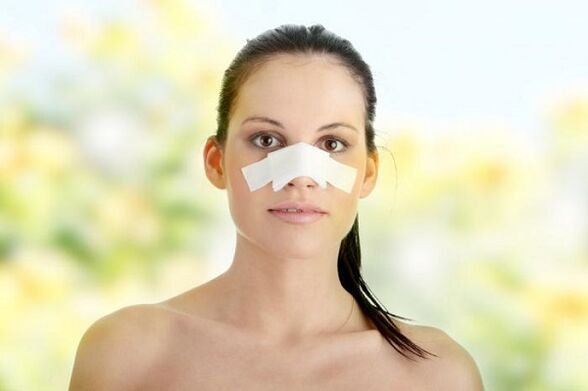
Select a new nose
To take into account the physician’s abilities and the patient’s needs, computer diagnostics are performed, followed by a photograph. Rhinoplasty, and accordingly the surgeon himself, cannot go beyond safe intervention if the shape of the nose does not allow the desired result to be achieved. But the doctor will be able to offer as close to ideal as possible.
Based on the aesthetics of the nasal parameters, more attention is paid to the profile angle calculated by the line connecting the chin and forehead relative to the back of the nose. As for women, rhinoplasty of the tip of the nose is relevant to them when it is raised slightly above the plane. Thanks to this correction, the face becomes noticeably younger. Remember that the shape is chosen by the surgeon, taking into account the parameters of the face as much as possible. The operation should be performed so that the nose is not only in harmony with the rest of the body, but also gives individuality to the owner.
Types of rhinoplasty
Rhinoplasty is a surgical procedure that is represented by several types:
- open intervention;
- surgery without removing the skin (closed);
- use of fillers;
- repeated (secondary);
- columella operation;
- changes in the shape of the nostrils;
- wide nose rhinoplasty.
As for the first method, the doctor makes an incision, directly along the bridge between the nostrils, thus achieving the greatest possible view for the surgeon. In this case, full control of the operation is possible. In the closed method, the incision is made from the inside, which causes less trauma than when correcting the shape of the nose due to the use of fillers. Other types of interventions are determined based on individual anatomy.
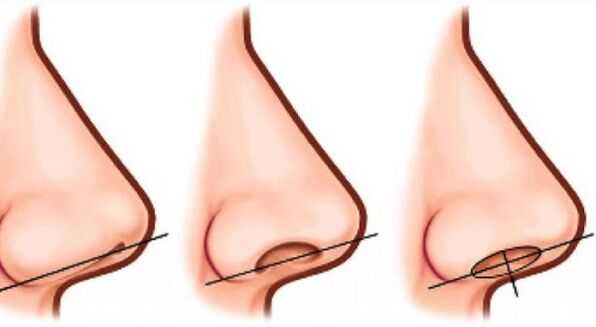
Rejuvenating rhinoplasty
Recently, the most popular type of rhinoplasty is a procedure in which a correction is made to affect the age-related increase in the bulge in the back of the nose, the sagging of the apex, and the base. Over time, it becomes larger and more pronounced, making the woman appear older. Moreover, the ears grow with age, so the surgeon must take this into account during the correction so that everything is proportionate. Even in the case of facelift, it is often necessary to correct the nose compared to the new facial contour. Otherwise, anti-aging rhinoplasty is the most individual type. The prices of these types of corrections will also be different in each case.
Contraindications
There is a certain list of conditions under which the operation is not performed:
- Rhinoplasty is not performed under the age of 18 unless it is a necessary measure after injury.
- Inflammatory processes in the skin of the nose.
- Severe diseases of the internal organs that can cause complications.
- Infectious, oncological and acute viral diseases.
- Diabetes.
- Diseases of the blood.
Preparing for surgery
High quality rhinoplasty is first and foremost a complete understanding of the doctor and the patient. During the first appointment, the surgeon should pay attention to any wishes. Based on the requirements, the physician should discuss possible techniques that will be relevant in a particular case. They then evaluate various shades that can directly or indirectly affect the course of the operation. The choice of a particular technique is based solely on the following parameters:
- customer requirements;
- structure of the nasal osteochondral corset;
- skin condition and thickness;
- the age of the patient;
- type of face.
In the same phase, computer modeling is required to create a virtual nose shape using a special program. In terms of the choice of surgical technique, the initiative is entirely in the hands of the surgeon. A thorough history is being made.
The physician should inform the patient about the correct preparation for surgery. This includes the elimination of certain foods from food, the mandatory cessation of smoking and the restriction of the intake of certain liquids, especially alcohol.
Surgery may be delayed if the patient has recently had a skin infection or upper respiratory tract disease. Medicines containing salicylates should be completely discontinued approximately 1-2 weeks prior to the correction procedure.
Operation
There are currently a sufficient number of private and public clinics where rhinoplasty can be performed. In such hospitals, prices are determined depending on the level of the institution, the equipment, the professionalism of the doctors and, of course, the procedure they offer and perform. Local anesthesia is often used and several sedative cubes are injected into the vein. There are times when general anesthesia is needed. During the operation, the patient is constantly monitored by a special computer device that monitors the stable work of the heart, pulse and pressure.

At the end of all surgeries and procedures, the patient is taken to the ward. There can often be some discomfort, but the use of targeted medications all goes away quickly. For some types of surgery, a special splint must be used to keep the nose upright and protected from accidental bruising. If rhinoplasty of the tip of the nose has been performed, a special triangular bandage is used for the support, it is possible to use nostril rails that are placed inside. You can leave the clinic within a few hours, but some patients choose to stay overnight.
Execution
The operation itself does not take too long, about a few hours, it all depends on the mode of intervention chosen and the initial complexity.
The first stage involves incision of the anterior lining of the nasal mucosa. The surgeon will then need to repair the tip of the nose, sometimes changing the height of the nostrils and the width of the base of the nose. After removal of the hump or nose, the required appearance is made, the final correction is made with cartilage, and they can be their own or preserved. During the deformities, the operation takes place in parallel with the change in the position of the nasal septum.
It is worth noting that after all the manipulations performed, the nose undergoes some changes that the surgeon is unable to predict with 100% accuracy, as evidenced by a number of photographs. Rhinoplasty is a very complex procedure, but there are still few unsuccessful interventions that can be attributed solely to the individual characteristics of the patient.
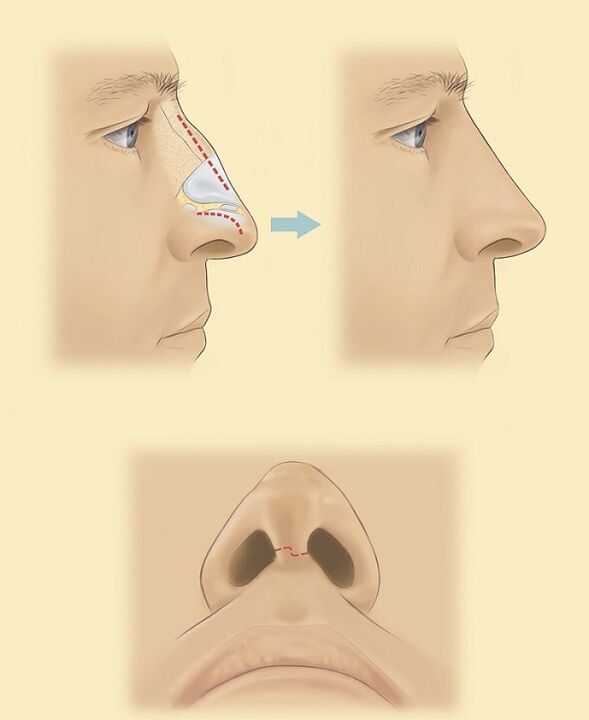
Possible complications
Any surgical procedure performed on the body is not natural and will not go away without a trace, and rhinoplasty is no exception. Surgeons, of course, need to have a high level of qualification, but sometimes there can be complications that are solely related to individual characteristics. These include:
- anatomical structure;
- reaction to anesthesia;
- wound healing;
- nose bleeding;
- the general reaction of the body to a surgical operation;
- infection.
The risk of complications can be reduced to zero if you carefully follow all of your doctor’s recommendations.
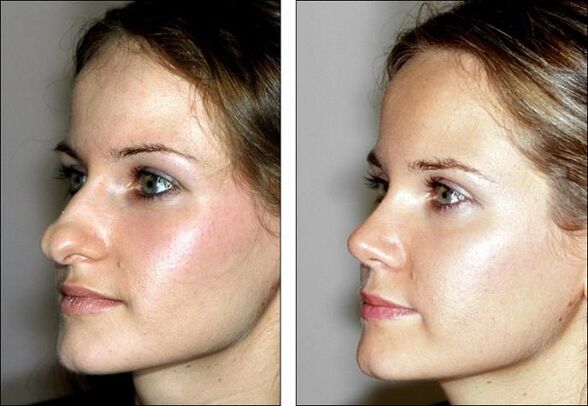
Recovery
In the first days after rhinoplasty, the nose can cause some discomfort. The appearance of swelling around the eyes is also noticeable, but no trace 4 days after surgery. After as little as 2 weeks, the nose almost completely fixes its final shape, but complete formation occurs within six months. During this period, you should be especially careful when caring for the skin in the nasal area because it is particularly sensitive to damage. During this period, it is advisable to refuse to visit the sauna and wear glasses for a month and a half.
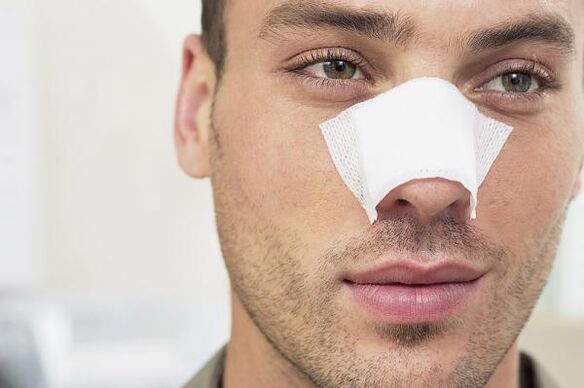
Back to normal life
If you do not strain yourself with a lot of physical exertion, you can start your daily life or even work within 1 week of completing the surgery. As for the resumption of the sport, it is recommended to start at the earliest after 3-4 weeks. You should also avoid direct sunlight on your face. In fact, anyone can perform a rhinoplasty, but achieving the desired result is only possible by fully following all of the doctor’s recommendations.






















